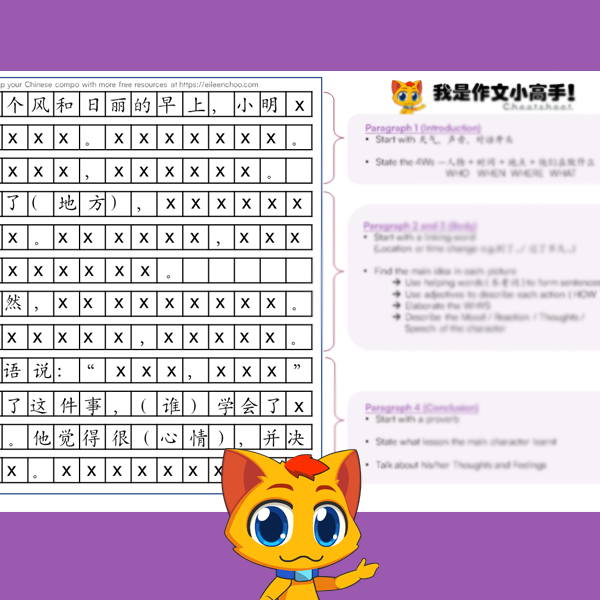
“What is the most difficult Chinese character to write?”
I remember one of my students asking me this random question in Chinese class one day. Trying to think at their level (my class was a Primary 3 class, so I had to think like 9 year olds), I wanted to say 衡 héng. However, my own curiosity got the better of me and I Googled it up in class instead.
Guess what Chinese character I found?
The most difficult Chinese character to write – biang
The most difficult Chinese character to write is biáng. What?!? What on earth is this word? Because of this interesting find, I decided to make it into something fun by getting my class involved too. Continue reading this post if you want to learn what we discovered about this Chinese character biáng and how to write this easily to impress your friends.
What does biáng mean in Chinese?
According to what we found, the Chinese character biáng doesn’t really mean anything. In fact, it’s not really a real word, so you can’t find it in any Chinese dictionary. (Haha…had to admit this made me feel better about not knowing it!) But it’s used as a name for a kind of noodles that originated from the Shaanxi cuisine. These hand-made noodles which are thick and belt-like are called biáng biáng miàn or biangbiang noodles.
Just like how some kids like to use the sound “kiap” to represent the sound that a pair of tongs made, biáng represents the sound of the noodle chef slapping the noodles against a table while he’s making them. There are also speculations that the word represents the sound of the people smacking their lips as they are enjoying the noodles.
Where did this Chinese character come from anyway?
According to my research, there are a few variation of the origin story of this Chinese character. However, my favourite has got to be the one about a young Chinese student.
Here’s how the story goes.
Once upon a time, there was this young Chinese student who was feeling hungry. As he was walking pass a Shaanxi noodle shop, he heard this “biang! biang!” sound coming out from it. Out of curiosity, he decided to enter the shop to see what’s going on.
To his surprise, he saw the noodle chef pulling long, flat strips of noodles. biáng, biáng, biáng, one by one, the chef made the noodles with love and finally when he was done, he added the final touch to his noodles. Psst….as he poured hot chilli oil over the noodles, the noodle’s fragrance filled the room and the young Chinese student couldn’t help but to order a bowl to try.
After slurping his delicious noodles, he suddenly realized that “oh no, he had no money to pay the bill!”.
To get himself out of the situation, the student came up with a brilliant idea. He asked the chef, “What’s the name of these delicious noodles?”
The chef looked at him and said “biáng biáng miàn”.
The student then asked “Do you know how to write the Chinese character biang?”
The chef scratched his head and looked at him blankly.
So the student said “Why not I teach you how to write it? In return, my noodles are free!”
Before the chef had time to respond, the student quickly grabbed a piece of paper, thought of all the Chinese characters that he knew and came up with a character so complicated and impressive that everyone in the restaurant stood up to clap for him.
Since the chef was also extremely impressed by the student, he tore up the student’s bill immediately and put the words onto his signboard.
What’s the morale of the story?
It pays to know some Chinese words to get you out of trouble sometimes. ^^”
Anyway, it’s quite a cute story.
Now that we know where this Chinese character came from, it’s time to learn how to write it (just for fun!).
How to write the hardest Chinese character in the world – biáng
Let’s see how to write this biáng character first.
Looks difficult? Let’s break this character down into simpler parts and help you remember how to write it.
Looking at its part
Let’s see…This Chinese character is written using Traditional Chinese. The top part is made up of the Chinese radical that we can find in 家, then we have a 八. Right in the middle we have 言 and 马. On each side of this word, we have 幺 and 长. Then we have a 月 on the left and a 刀 on the right. Finally, we have the word 心 below and the Chinese radical that we can find in 边 on the left. Hmm….what story can you think of?
Now here’s the story I shared with my class:
Remember the story of the Chinese student?
As the Chinese student walked passed a noodle shop [Chinese radical that we can find in 家], he heard a chef making the “biang! biang!” sound. Since the chef is an old man, he has a moustache. Hence, the 八.
Every month (月), he needs to sharpen his knife (刀) to continue working. 幺 means small. With his sharp knife, he cuts 2 small (幺) and long (长) strips of noodles to fill each bowl. This chef has a pet horse (马) who makes a lot of noise when he’s cooking. So whenever he’s cooking, he’ll ask(言) his pet horse (马) to keep quiet so that he can focus (用心).
Once he’s done, he can go home by walking [Chinese radical that we can find in 边 on the left.].
There you go! 62 strokes simplified! Practice writing this biang character as you think of this story. My class had fun doing it! =) Once you are ready, upload a photo of you and your masterpiece on Instagram and tag me at theeileenchoo. I’ll pick a few of my favourite and feature it on my story.
Conclusion
Alright, now that you’ve learnt how to write this complicated looking Chinese character, does this make the other Chinese characters that you are learning in school seem much easier? Let me know your thoughts in the comments below.






